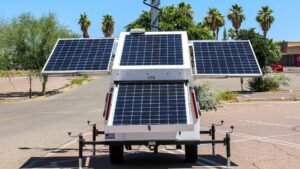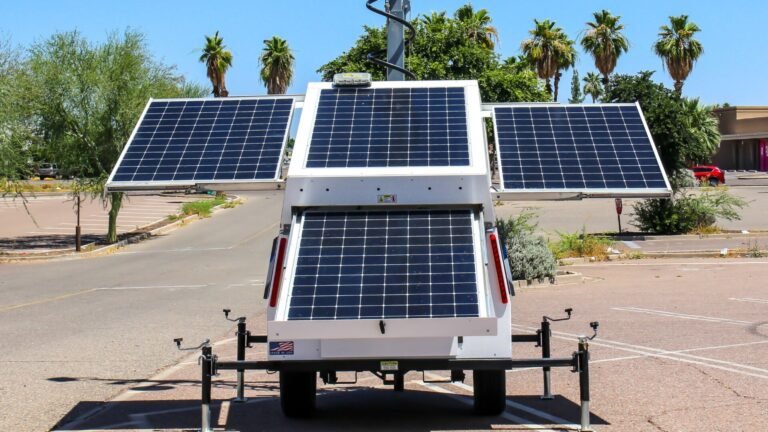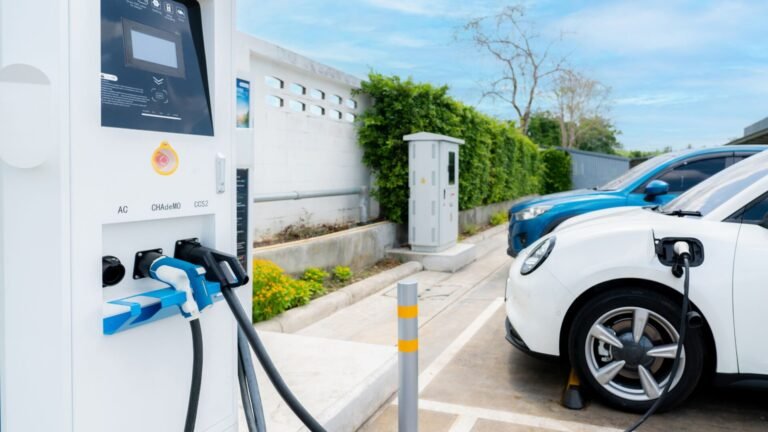The solar energy landscape is continuously evolving, with advancements in technology and changes in market demands shaping the future of solar installations.
As we step into 2024, one of the critical decisions for homeowners, businesses, and utility-scale solar projects revolves around the choice between high-voltage and low-voltage solar panels.
This decision is further nuanced by the integration of TOPCon technology, which has set new standards in solar panel efficiency and performance.
Understanding High Voltage and Low Voltage Solar Panels
Before delving into the comparison, it’s essential to understand what distinguishes high-voltage from low-voltage solar panels.
Typically, a high-voltage solar panel operates above 48 volts, commonly used in utility-scale and large commercial solar installations.
These panels are designed for systems where long-distance transmission is required, minimizing energy loss over distances.
On the other hand, low-voltage solar panels operate at voltages below 48 volts, ideal for residential and small-scale commercial applications.
These panels are favored for their safety, ease of installation, and compatibility with standard battery storage systems.
The Advancement of TOPCon Technology
TOPCon technology has revolutionized solar panels by enhancing their efficiency and durability.
This technology, applied in both high and low-voltage solar panels, reduces surface recombination and increases the panels’ ability to convert sunlight into electricity.
In 2024, TOPCon has become a critical factor in maximizing the performance and lifespan of solar installations, choosing between high and low-voltage panels even more significant.
Pros and Cons of High Voltage Solar Panels
Pros:
- Reduced BOS (Balance of System) Costs: High voltage systems require fewer parallel connections, reducing the quantity of wiring, combiner boxes, and other system components, which can lead to lower overall system costs.
- Improved Efficiency in Energy Transmission: High voltage panels are more efficient over long distances, making them ideal for large-scale installations or situations where panels are far from the point of use.
- Enhanced Scalability: For large projects, high voltage systems allow for easier scaling, accommodating growing energy needs without substantial modifications to existing infrastructure.
Cons:
- Complex Installation and Safety Concerns: Higher voltage systems require specialized installation practices and equipment to manage the increased risk of electrical shock.
- Regulatory and Compliance Challenges: High voltage installations may face stricter regulations and longer approval times due to their increased safety risks.
Pros and Cons of Low Voltage Solar Panels
Pros:
- Safety and Ease of Installation: Low voltage systems pose less risk of electrical shock, making them safer and easier to install, an important consideration for DIY enthusiasts and residential installations.
- Flexibility and Compatibility: These panels work well with standard battery storage systems and are suitable for a variety of applications, from homes to small businesses.
- Lower Initial Costs: Typically, low voltage systems have lower upfront costs, appealing to individual homeowners and small-scale installations.
Cons:
- Higher BOS Costs for Large Systems: In larger installations, the need for more connections, cables, and components can increase overall system costs.
- Limited Scalability: Expanding a low-voltage system to meet increased energy demands can be more complex and costly compared to high-voltage systems.
Evaluating What’s Better in 2024
The decision between high-voltage and low-voltage solar panels is not a one-size-fits-all solution; it largely depends on the specific needs, scale, and location of the installation. Here are key considerations for 2024:
- Application and Scale: Large commercial or utility-scale projects might benefit more from high-voltage solar panels due to their efficiency at scale and lower long-distance transmission losses. Conversely, residential or small commercial installations might find low-voltage panels more suitable due to their safety and ease of installation.
- Safety and Regulations: Safety is paramount in any electrical installation. Low-voltage panels offer an inherent safety advantage, particularly in residential settings. However, with proper safety measures and professional installation, high-voltage systems can be equally safe.
- Cost Considerations: While high voltage panels might offer reduced BOS costs for large installations, the overall financial analysis should include potential regulatory, installation, and maintenance costs. Low voltage systems might present higher BOS costs but could be more cost-effective for smaller, simpler projects.
- Technological Advances: The integration of TOPCon technology into both high and low-voltage panels has significantly narrowed the performance gap. In 2024, the choice between high and low voltage may increasingly depend on the specific TOPCon-equipped panel models available and their respective efficiency rates, rather than the voltage level alone.
- Future Expansion: If there’s potential for future expansion, high voltage systems offer more scalability, which could be a deciding factor for some projects.
The Role of TOPCon Technology
The universal application of TOPCon technology across both high and low-voltage panels in 2024 has enhanced the performance parameters of solar installations.
TOPCon’s superior efficiency rates and durability make it a compelling choice, irrespective of the voltage. However, the technology’s benefits should be weighed alongside the system’s voltage characteristics to ensure the best match for the project’s requirements.
Conclusion: A Tailored Approach in 2024
In conclusion, the debate between high-voltage and low-voltage solar panels in 2024 does not yield a clear winner but highlights the importance of a tailored approach.
Factors such as the project’s scale, location, safety requirements, and future energy needs all play crucial roles in determining the most suitable option.
Additionally, the adoption of TOPCon technology in both high and low-voltage panels has leveled the playing field, emphasizing efficiency and performance.
Ultimately, the choice between high and low-voltage solar panels should be informed by a comprehensive evaluation of the project’s specific needs and goals.
With the solar industry continuing to evolve, staying informed and considering all variables will guide users to the most efficient, safe, and cost-effective solar energy solutions in 2024 and beyond.





